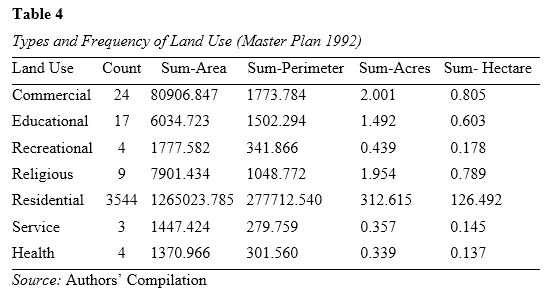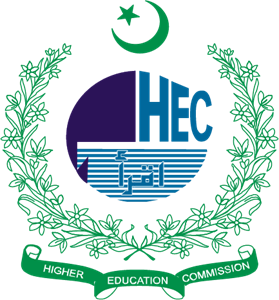Analysis of Successive Land-Use Changes in Old Residential Area of “Festival of Art & Culture (FESTAC) Town” Lagos, Nigeria
Abstract
 Abstract Views: 178
Abstract Views: 178
In recent times, land use for commercial, residential, and transportation purposes among others is dislodging former units and bare sites as a result of structural alteration, mostly in the urban centers of Nigeria. The changes are due to various guises and structural shift, outright demolition and redevelopment and their impact is consequential. This paper assesses the current pattern which residential zones have assumed within the old Festival of Art and Culture (FESTAC) Town in Lagos, Nigeria. The methods used in the study included the delineation of the study area into six avenues which the researcher(s) adopted for the purpose of even coverage, as well as the use of structural questionnaires, base map and GPS in sourcing for necessary data on the field. Additionally, the data collected were assembled, coded and analyzed using simple descriptive statistics and conventional mapping techniques. The findings revealed the factors responsible for the alteration of land use to enhance financial gains, such as changing neighborhood characteristics and the evasion of permission from the town planning authorities. The findings also provided evidence that many structures still remain vulnerable to conversion, alteration, and/or demolition. The paper recommends that adequate permission should be granted by the legal authority before the conversion and rebuilding of any structure into a new land use.
Downloads
References
Adeze, O. (2018, September 26). The Burden of Nigeria’s rising Population. The Sun. https://www.thesunnewsonline.com/category/nationalsunnewspaper
Ahmed, Y. A. (2005). Physical problems of urban planning: A case of Ilorin, Nigeria. Ilorin Journal of Business and Social Sciences, 10(1&2), 202-214.
Ahmed, Y. A. (2013). Urban traffic dilemma and potential remedy: Example from Ilorin City, Nigeria. African Research Review: An International Multidisciplinary Journal, 7(1), 216-270.
Apter, A. (2005). Gruaule’s legacy: Rethinking “la parole Claire” in Dogon studies. Cahiers d’études Africaines, 177, 95-129. https://journals.openedition.org/etudesafricaines/14901
Enahoro, I. (1977). The second world black and African festival of arts and culture: Lagos, Nigeria. Black Scholar, 9(1), 27–33.
Fasona, M. J., & Omojola, A. S. (2004, June 7-9). GIS and the remote sensing for urban planning: A case of FESTAC Town, Lagos, Nigeria. Paper presented at the 12th International Conference on Geo Informatics – Geospatial Information Research: Bridging the Pacific and Atlantic. University of Gävle, Sweden.
Federal Housing Authority (FHA). (1985). A planning and research monograph of Federal Housing Authority, Lagos, Nigeria. Author.
Hartshorne, T. A. (1992). Interpreting the city: An urban geography. John Wiley.
Mckinsey Global Institute. (2016). Lions on the move II: Realizing the potential of Africa’s economies: Report. https://www.mckinsey.com/featured-insights/middle-east-and-africa/lions-on-the-move-realizing-the-potential-of-africas-economies#
National Population Commission (NPC). (1991). Census news publication Lagos, Nigeria. Author.
Oyeleye, D. A. (2001), Settlement geography. University of Lagos Press.

Copyright (c) 2020 Yusuf Alapata Ahmed, O. Bashirat Olantinwo

This work is licensed under a Creative Commons Attribution 4.0 International License.
JAABE follows an open-access publishing policy and full text of all published articles is available free, immediately upon publication of an issue. The journal’s contents are published and distributed under the terms of the Creative Commons Attribution 4.0 International (CC-BY 4.0) license. Thus, the work submitted to the journal implies that it is original, unpublished work of the authors (neither published previously nor accepted/under consideration for publication elsewhere). On acceptance of a manuscript for publication, a corresponding author on the behalf of all co-authors of the manuscript will sign and submit a completed Copyright and Author Consent Form.
Copyright (c) The Authors





